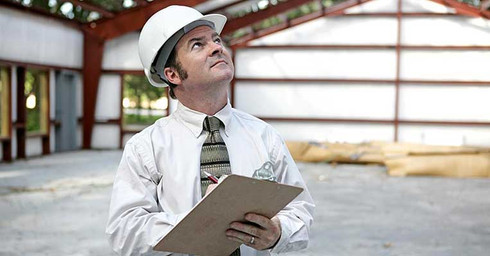Public Safety Codes and Signal Booster Solutions
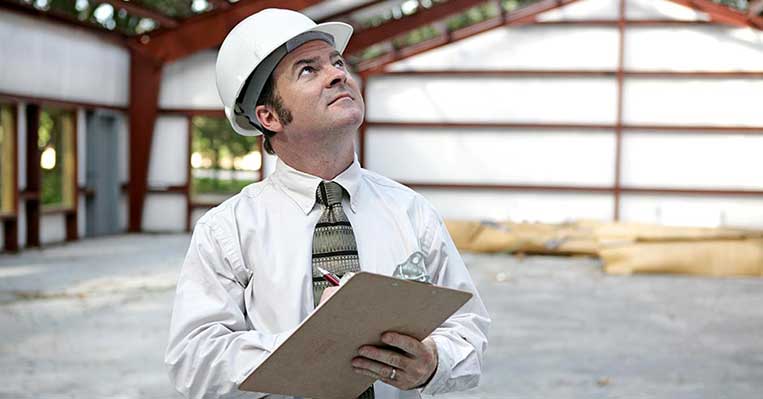
Before obtaining certificates, licenses, and permits for occupying commercial buildings and property, several building codes must meet federal requirements and/or municipal zoning laws.
In general, these guidelines range from structural, electrical, mechanical, fuel/gas, plumbing, drainage, landscaping, accessibility, health, and fire safety.
Failing to comply with these requirements may lead to rejected building permits, a re-approval process, and even penalties if the building is occupied for use while failing to address the prerequisites.
Let's focus on one of the fastest evolving standards for commercial buildings: Fire & Public Safety Radio Communication Codes.
Why Fire & Public Safety Radio Codes are Becoming a Bigger Priority
During times of emergency, especially without power, instant communication is an absolute necessity.
Think of the 9/11 terrorist attacks, the rise in number of mass shootings, and the devastation of natural disasters. Without clear communication, chaos ensues. People in dire need of safety aren’t able to relay critical information. First responders, like police and firefighters, aren’t able to prioritize rescue areas, and emergency support & recovery efforts are severely delayed.
In times of crisis, communication is a life-saving absolute. Any delay in response, even a few seconds can erase a life.
With such concerns in mind, updated fire & public safety codes are now in place across a wide spectrum of buildings and structures, such as:
- Airports
- Stadiums
- Shopping malls
- Universities
- Hotels
- Multi-story Buildings
- Parking Garages
- Elevators
- And other places of business
Compliance with building safety codes is Step One in promoting every opportunity for all of us, and our families, to live, work and play in safe surroundings.
Top Organizations Setting Standards & Regulations
Three organizations that have the most widely adopted codes and/or influence are:
National Fire Protection Agency (NFPA)
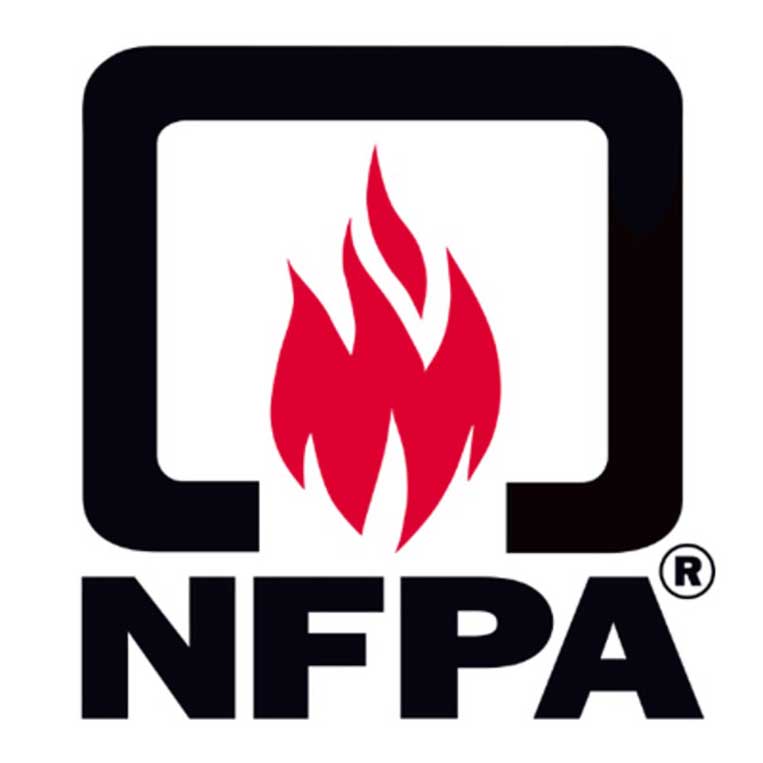
Founded in 1896, the NFPA is a leading organization in defining fire, electrical, and other safety hazards. More than 300 NFPA codes and standards are in place, with 200+ of those backed by the American National Standards Institute.
Here are 5 of their top modal codes:
NFPA 72: National Fire Alarm & Signaling Code
NFPA 72 provides modern benchmarks to the installation, performance, and maintenance of fire detection systems, emergency communications, and mass notification systems.
Such benefits include 99% cellular coverage in all critical areas of a building with a strong signal (minimum -95 dB) with backed-up battery power lasting at least 24 hours.
NFPA 70: National Electric Code (NEC)
NFPA 70 endorses guidelines to safe electrical wiring design and installation across all 50 states. Although not a law, it is the de facto standard of electrical requirements in America.
NFPA 70e: Standard for Electrical Safety in the Workplace
NFPA 70e establishes safety requirements and warnings to help companies and employees avoid workplace injuries from shock and/or electrocution. It covers current requirements for safety-related work practices and maintenance.
NFPA 13: Standard for the Installation of Sprinkler Systems
NFPA 13 determines industry specification for automatic fire sprinkler systems inclusive of design, installation, and component options.
NFPA 701: Standard System for the Identification of the Hazards of Materials for Emergency Response
NFPA 701 provides testing methods to determine the flammability/flame retardancy of various textiles such as curtains, window shades, and other fabrics used in architectural structures.
International Code Council (ICC)
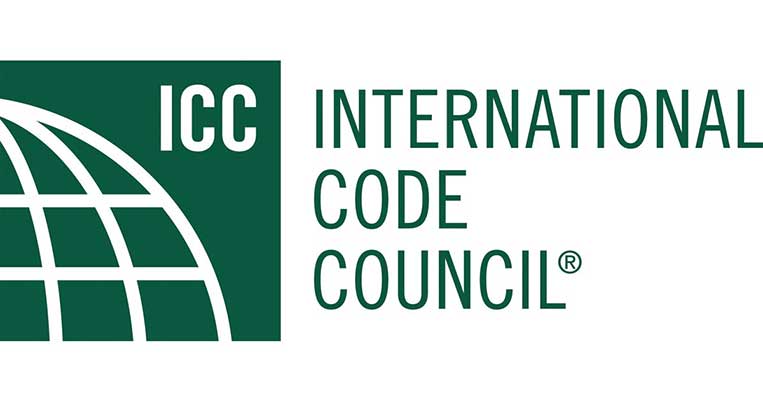
Established in 1994, ICC codes are internationally accepted across the globe. More than a dozen international codes (I-Codes) address building, zoning, fire, residential and energy conservation codes.
Here are 2 codes that are widely used in the US.
International Fire Code (IFC) of 2018, 2015, 2012, 2009, 2006, etc.
The IFC (reviewed every 3 years) establishes up-to-date fire safety codes and conditions to safeguard public health and safety in all buildings, structures, and premises. Currently, IFC codes are used in 42 states including the District of Columbia, New York City, Guam, and Puerto Rico.
International Building Code (IBC) of 2018, 2015, 2012, 2009, 2006, etc.
The IBC (reviewed every 3 years) provides current building design and installation codes to preserve public welfare with provisions to encourage newer smart technologies. IBC codes are used in all 50 states including, the District of Columbia, Guam, Northern Marianas Islands, New York City, US Virgin Islands, and Puerto Rico.
First Responder Network Authority (FirstNet):
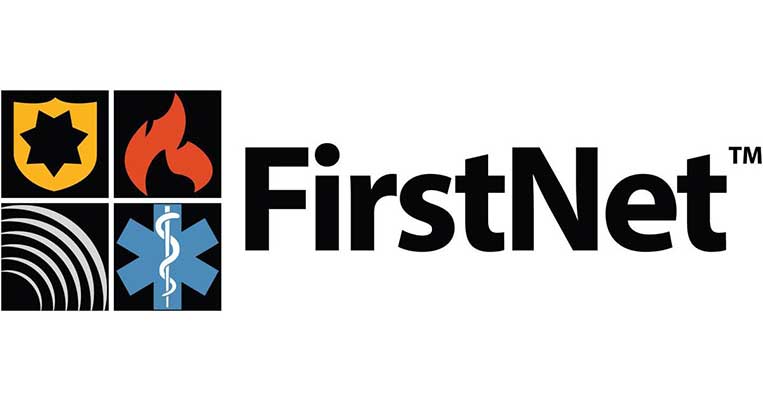
Created in 2012, FirstNet is the country’s first attempt to build a nationwide wireless broadband public safety network to be operated by AT&T. FirstNet allows jurisdictions to share one network and avoid incompatible radio networks and equipment.
Nationwide Public Safety Broadband Network (NPSBN)
NPSBN is the country’s first unified public safety network to serve first responders (police, firefighters, US marshals, etc.), EMS (ambulances, paramedics, technicians, etc.) and other public safety workers. By having everything under one umbrella nationwide, NPSBN unifies over 10,000 separate first responder radio networks. It modernizes thousands of organizations and empowers public safety workers at the local, state, and federal levels.
Departments that Complete Building Inspections
After plans are reviewed, approved, and construction completed, Authorities Having Jurisdiction check for building code enforcement. Code compliance spans mechanical, electrical, plumbing, storm drainage, and all other conditions needing approval.
Generally the local fire marshalls approve fire code compliance, a key component to thus helping with obtaining the Certificate of Occupancy for any building.
While many states use NFPA and ICC codes, confusion begins when a state, or one of its local authorities (county, city, or parish) exercises its ability to adopt, adapt, or amend certain parts of codes, resulting in variations of fire safety standards. This is further compounded by such instances as older buildings still operating under older fire codes while newer construction in the same municipality may operate under whatever code was current at the time of construction.
For example, the State of Texas requires a minimum of the 2006 International Fire Code. The city of San Antonio adopted the 2015 standard while Houston still uses the 2012 version. Austin, however, uses the 2012 guidelines but with amendments unique to Austin.
Consult I-Codes by States to find municipal websites and the details of how each participates in being NFPA-compliant.
The Biggest Evolution in the Public Safety Industry
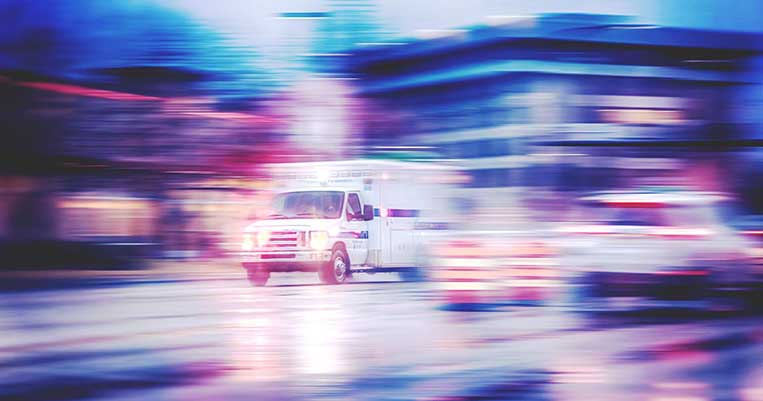
Reliable cellular coverage is now in the regulatory spotlight.
As with mandatory compliance with codes for plumbing, fire sprinkler systems, and building accessibility, reliable cellular coverage is no longer an optional feature. Measureable, reliable cellular coverage is an essential component to everyday work and life standards.
Newly established guidelines generally require a baseline for:
- Adequate cellular coverage and signal strength
- Reliable equipment
- Dedicated frequency bands for public safety coverage
Specifically, NFPA requirements for public safety call for:
- 95-99% in-building cellular coverage
- Minimum -95 dBm signal strength for Public Safety Frequency Bands
- Nema 3R or 4 enclosures to house important radio equipment and be windproof, dustproof, and waterproof
- Some systems require a real-time monitoring system, a failure alarm system and a 12-hour battery backup
- Customizable frequency adjustment to be in compliance with future public safety requirements, like FirstNet
The bar for cellular coverage compliance is now quite high, considering the growing number of commercial buildings and multi-story properties across the nation, having 95 to 99% radio coverage indoors.
The challenge to maintain a quality incoming/outgoing signal in a commercial setting is complex, involving a number of variables.
Radio signal connectivity is affected by:
- Weather
- Cell tower distance
- Outside interference
- In-building interference, including concrete, thick walls, metal shielding, and energy efficient construction choices
These challenges to a strong, consistent signal can lead to limited service, or worse - no in critical locations such as elevators, parking garages, and stairwells.
NFPA and ICC mandates address the gravity of these common issues, and have set -95 dBm as the acceptable standard for public safety frequencies.
Solutions for Improved Cellular Signal to Meet Fire & Public Safety Compliance
One of the fastest-growing answers to signal coverage compliance is an in-building Distributed Antenna Systems (DAS). Basically, a DAS system is a network of antennas with a central amplifying system that enhances First Responder public safety frequencies.
While there are many different types of DAS technologies, the two leading Public Safety DAS solutions for in-building cellular amplification types are Active DAS and Passive DAS.
While both have the same objective to boost public safety radio frequency, there are key differences between the two systems.
Active DAS:
Active DAS requires connecting to each of the carrier networks, thus resembling a mini-cell tower. This leads to a much improved signal, but also carries significantly higher costs for specialized equipment and cabling. Further, the time required to get the required approvals for each carrier can be a long bureaucratic process.
At $5-$10 per square foot of coverage, Active DAS solutions can be very expensive in terms of design, approvals, equipment, and installation. In general Active DAS is your solution for large signal coverage areas of over 500,000 sq ft, such as airports and stadiums.
Passive DAS:
Passive DAS (also known as bidirectional amplifiers or repeaters) take existing outside signal, amplify it, and rebroadcast the boosted signal indoors. Unlike Active DAS, carrier permission is much quicker to obtain, usually requiring just an online FYI form to carrier with no response needed. Cost per sq ft is substantially lower at $1-$2 per sq ft.
For coverage under 500,000 sq ft, Passive DAS is a much more cost-effective and faster deployment option.
Notable Public Safety DAS Solutions:
SHIELD EXTEND
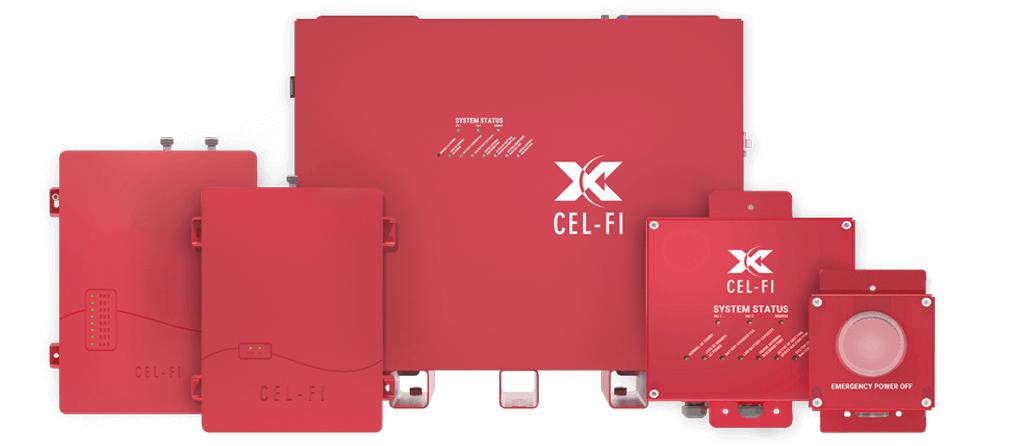
- Provides SMR 700/800MHz coverage for any jurisdiction
- Class A or B Public Safety BDA with 56 customizable channels
- Remote monitoring with Cel-Fi Wave Remote Monitoring and portable Wave App
- Runs with power over ethernet eliminating long cumbersome cable runs
- Expandable with up to 6 coverage units covering up to 200,000 sq ft
Cobham Wireless
UK-based Cobham Wireless specializes in smart city coverage across buildings, transportation hubs and routes an on to remote, at times rural, locales.
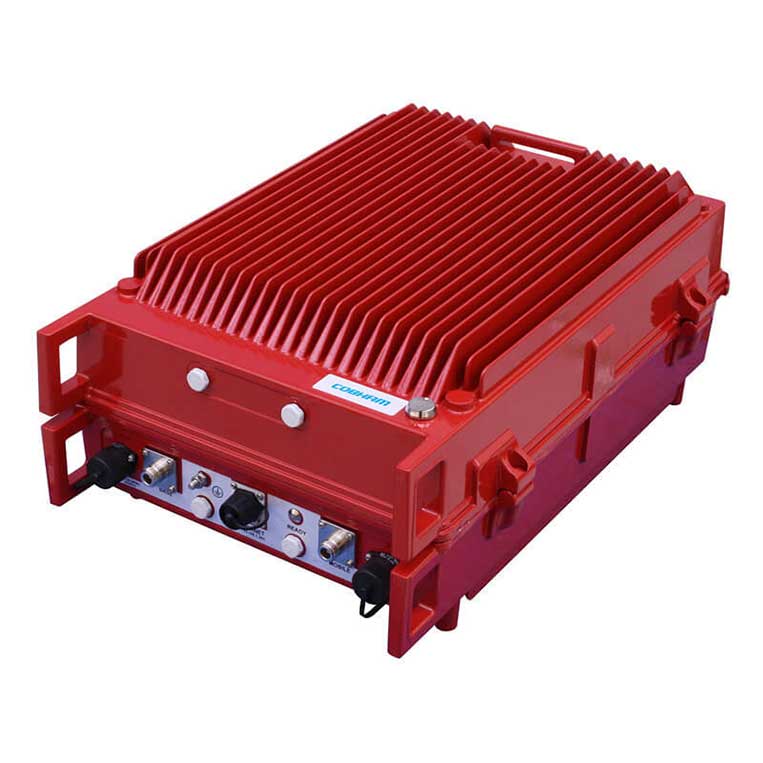
- Digital multi channel RF signal booster
- Provides SMR 700/800MHz coverage for buildings, tunnels, metros and external environments
- NFPA 72-2010, chapter 24 and IFC 510.1 compliant
- Supports Band 14 for LTE 700 PS
- Supports APCO phase 1 and 2 for public safety networks
- Patented DSP filtering with up to 12 independent filters providing large flexibility
- Unique AGC (automatic gain control) or squelch feature per channel
- High performance noise and delay characteristics
- 30 dBm output power per band
- Compact IP-65, NEMA 4 enclosure, passively cooled
- Management via web based GUI
Comba Telecom
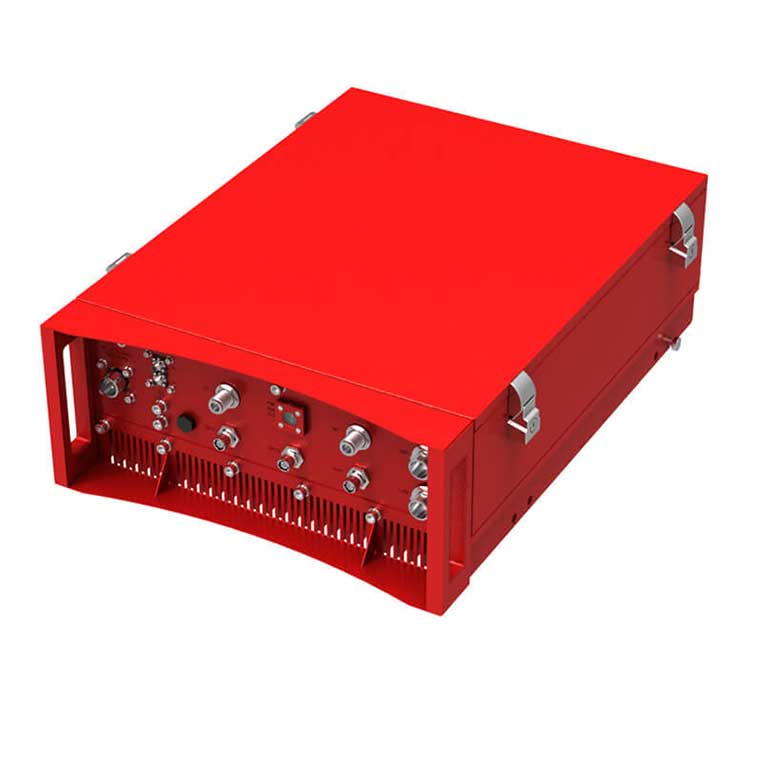
- Founded in 1997, Comba Telecom is a $1 Billion Dollar Company and Leader in the Wireless Industry headquartered in Hong Kong and more than 40 offices worldwide.
- Public Safety Offering for small to large buildings as well as campus environments: 25,000 to multi-millions square feet.
- Compliant with all NFPA alarming requirements. Plus 2 spare dry contacts points for future NFPA alarming regulations requirements.
- Compliant with all NFPA NEMA 4 enclosure requirements. Plus corrosion, which is not required.
- Compliant with all NFPA Battery Backup requirements.
- Mandatory Isolation Testing which protects Public Safety Network from being interfered with and degraded while commissioning of ERRCS.
- Public Safety BDAs protect signal from network interference and desensitization of main network base station with specialized digital software programming and processing.
Westell Technologies
Based in Aurora, Illinois, Westell Technologies, Inc. backs its comprehensive ClearLink in-building wireless solutions with more than 35 years of industry expertise in wireless technology.
- Supports Dual‐Band 700/800 MHz
- NFPA 72 (2016) compliant Class B Amplifier
- 33 dBm (2W) Power Output DL/UL
- 90 dB Gain
- UL Listed
- FirstNet Ready
- Low Power Consumption
- 700 and 800 MHz Bands independently controlled
- Passband Options. Can be turned on/off independently
- Independent Power and Gain Control per Band
- Easy to Install and Maintain
- Dry contacts for Fire Panel Connection
SureCall Guardian 3 Quick Response
Silicon Valley based SureCall, founded in 2001, is an industry leader in cellular signal booster technology.
Their public safety signal booster is NFPA 72 & FirstNet compliant. It’s able to provide 90-99% coverage with a minimum -95 dB up to 80,000 sq ft for 100+ users per band (700 Mhz FirstNet, 800 MHz & 900 MHz SMR).
Along with a NEMA 4 housing, remote monitoring & battery backup capabilities, and a powerful 3 watt system providing +80 dB gain, it’s the perfect combination of performance and pricing.
Compared to other Public Safety DAS signal boosters, this passive DAS model has consistently been praised by system integrators and installers for its durability, speed-to-install, and price point. Highly recommended by owners of commercial buildings under 80,000 sq ft.
Check out our complete Public Safety Guide for even more information
Contact Us
We’re here to assist with any issues you might be experiencing with public safety radio coverage. Contact us today.
Interested in Learning More? Check Out Our Cellular Info Hub / WiFi Info Hub
Get Your Building Tested for Public Safety Compliance
Get StartedTable of Contents

Recent Posts


